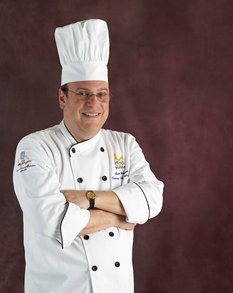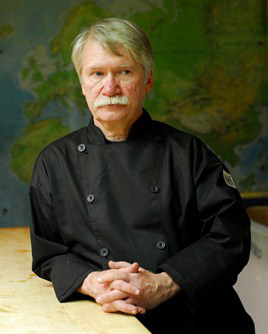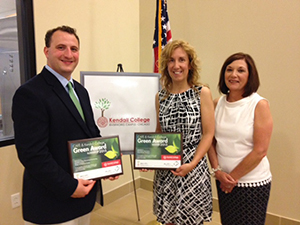Mayo’s Clinic: Mise en Place
Wednesday, 08 July 2015 03:00
 An understanding of “putting in place” is one of the most important skills for culinary students to learn and practice in becoming professionals. Says Dr. Mayo, proper mise en place is actually composed of three parts—all of which do double duty in the kitchen and dining room.
An understanding of “putting in place” is one of the most important skills for culinary students to learn and practice in becoming professionals. Says Dr. Mayo, proper mise en place is actually composed of three parts—all of which do double duty in the kitchen and dining room.
By Dr. Fred Mayo, CHE, CHT
In the last “Mayo’s Clinic,” we completed a three-part series on using out-of-class learning experiences such as interviewing, structured observation and shadowing. This month, we will talk about a core issue in culinary education: mise en place.
Mise en place—literally, the phrase in French means “putting in place”—has become a personal and professional discipline for chefs. It structures the way they work in kitchens and, for many of them, how they organize and structure their lives. There are even articles such as “For A More Ordered Life, Organize Like A Chef”published in the NPR blog, “The Salt,” that point out how useful the discipline can be in life.
As we teach our students to learn and practice mise en place, it might be useful to remember the three dimensionsof mise en place: physical, intellectual and emotional.
Physical Mise en Place
One of the primary foundation skills we teach new culinary students involves the practice and importance of organizing their stations in a kitchen before they start to prepare food. It is a matter of both arranging the equipment and the ingredients since both are critical to successful cooking.

 Telling people to be the best they can be allows them to quit striving whenever they want. To be the best in your field, however, one must always strive for the next level. This is the generations-long American Dream that we, as teachers, offer our students.
Telling people to be the best they can be allows them to quit striving whenever they want. To be the best in your field, however, one must always strive for the next level. This is the generations-long American Dream that we, as teachers, offer our students. What can the graduate do for the school? Says Chef Sorgule, the proper question should be, What can the school do for the graduate?
What can the graduate do for the school? Says Chef Sorgule, the proper question should be, What can the school do for the graduate? High-school culinary-arts programs in Grand Rapids, Mich., and Batavia, N.Y., earn honors for exemplary practices in—and innovative teaching of—ecological sustainability.
High-school culinary-arts programs in Grand Rapids, Mich., and Batavia, N.Y., earn honors for exemplary practices in—and innovative teaching of—ecological sustainability. Say a menu item doesn’t sell. Is it overpriced, poorly described, not satisfying to the customer or a combination of these? To understand the basics of restaurant-performance management systems, here are three key teachings that would be part of any 101-level course on the topic.
Say a menu item doesn’t sell. Is it overpriced, poorly described, not satisfying to the customer or a combination of these? To understand the basics of restaurant-performance management systems, here are three key teachings that would be part of any 101-level course on the topic.